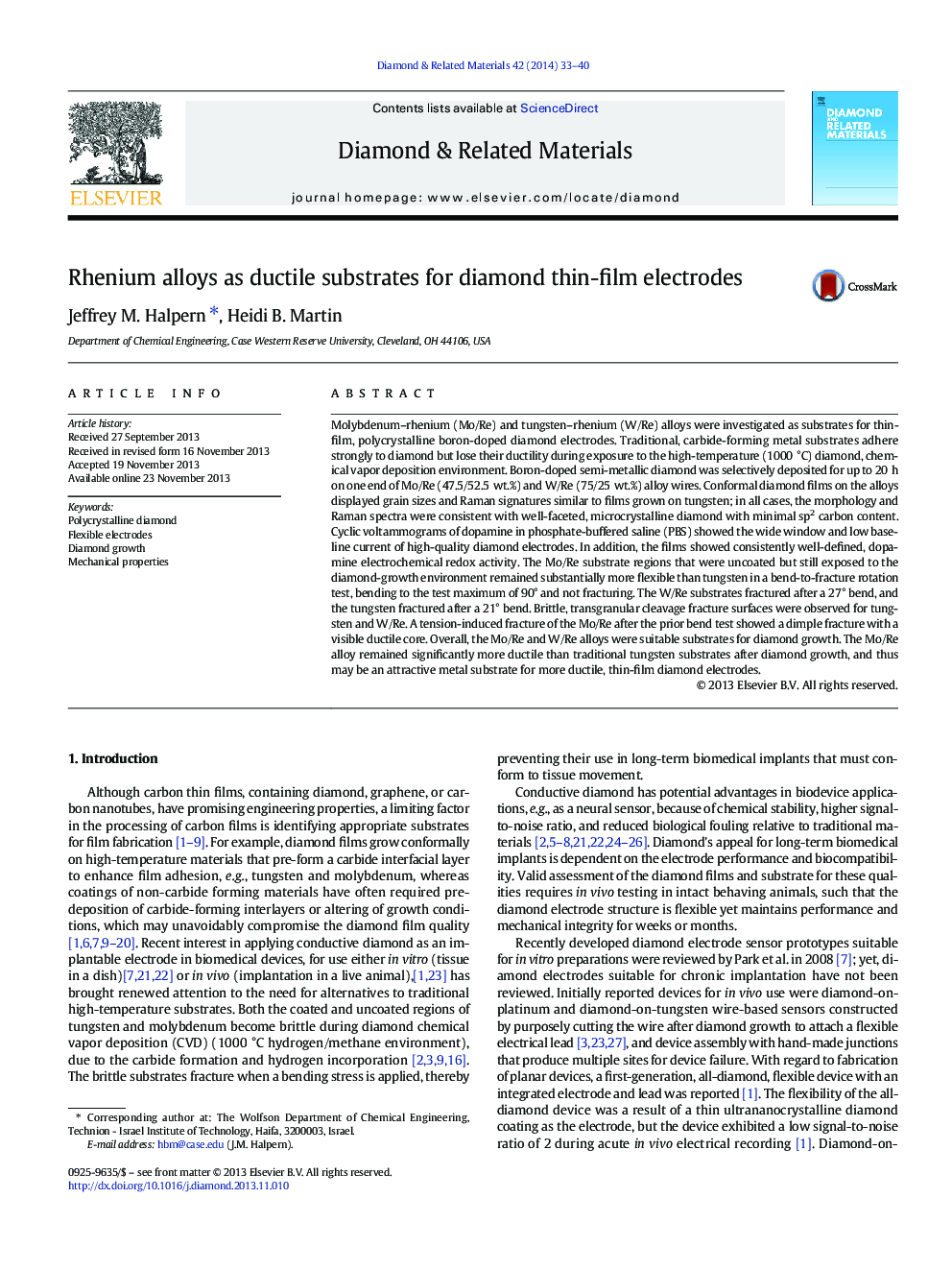| Article ID | Journal | Published Year | Pages | File Type |
|---|---|---|---|---|
| 702106 | Diamond and Related Materials | 2014 | 8 Pages |
•Rhenium alloys were investigated as substrates for diamond film growth.•Mechanical bend testing and imaging compared alloy ductility and microstructure.•Molybdenum–rhenium alloys stayed more flexible than tungsten and tungsten–rhenium.•Embrittlement was limited to the outer shell of the molybdenum–rhenium wires.•Alloys were viable high-temperature substrates for flexible diamond electrodes.
Molybdenum–rhenium (Mo/Re) and tungsten–rhenium (W/Re) alloys were investigated as substrates for thin-film, polycrystalline boron-doped diamond electrodes. Traditional, carbide-forming metal substrates adhere strongly to diamond but lose their ductility during exposure to the high-temperature (1000 °C) diamond, chemical vapor deposition environment. Boron-doped semi-metallic diamond was selectively deposited for up to 20 h on one end of Mo/Re (47.5/52.5 wt.%) and W/Re (75/25 wt.%) alloy wires. Conformal diamond films on the alloys displayed grain sizes and Raman signatures similar to films grown on tungsten; in all cases, the morphology and Raman spectra were consistent with well-faceted, microcrystalline diamond with minimal sp2 carbon content. Cyclic voltammograms of dopamine in phosphate-buffered saline (PBS) showed the wide window and low baseline current of high-quality diamond electrodes. In addition, the films showed consistently well-defined, dopamine electrochemical redox activity. The Mo/Re substrate regions that were uncoated but still exposed to the diamond-growth environment remained substantially more flexible than tungsten in a bend-to-fracture rotation test, bending to the test maximum of 90° and not fracturing. The W/Re substrates fractured after a 27° bend, and the tungsten fractured after a 21° bend. Brittle, transgranular cleavage fracture surfaces were observed for tungsten and W/Re. A tension-induced fracture of the Mo/Re after the prior bend test showed a dimple fracture with a visible ductile core. Overall, the Mo/Re and W/Re alloys were suitable substrates for diamond growth. The Mo/Re alloy remained significantly more ductile than traditional tungsten substrates after diamond growth, and thus may be an attractive metal substrate for more ductile, thin-film diamond electrodes.
